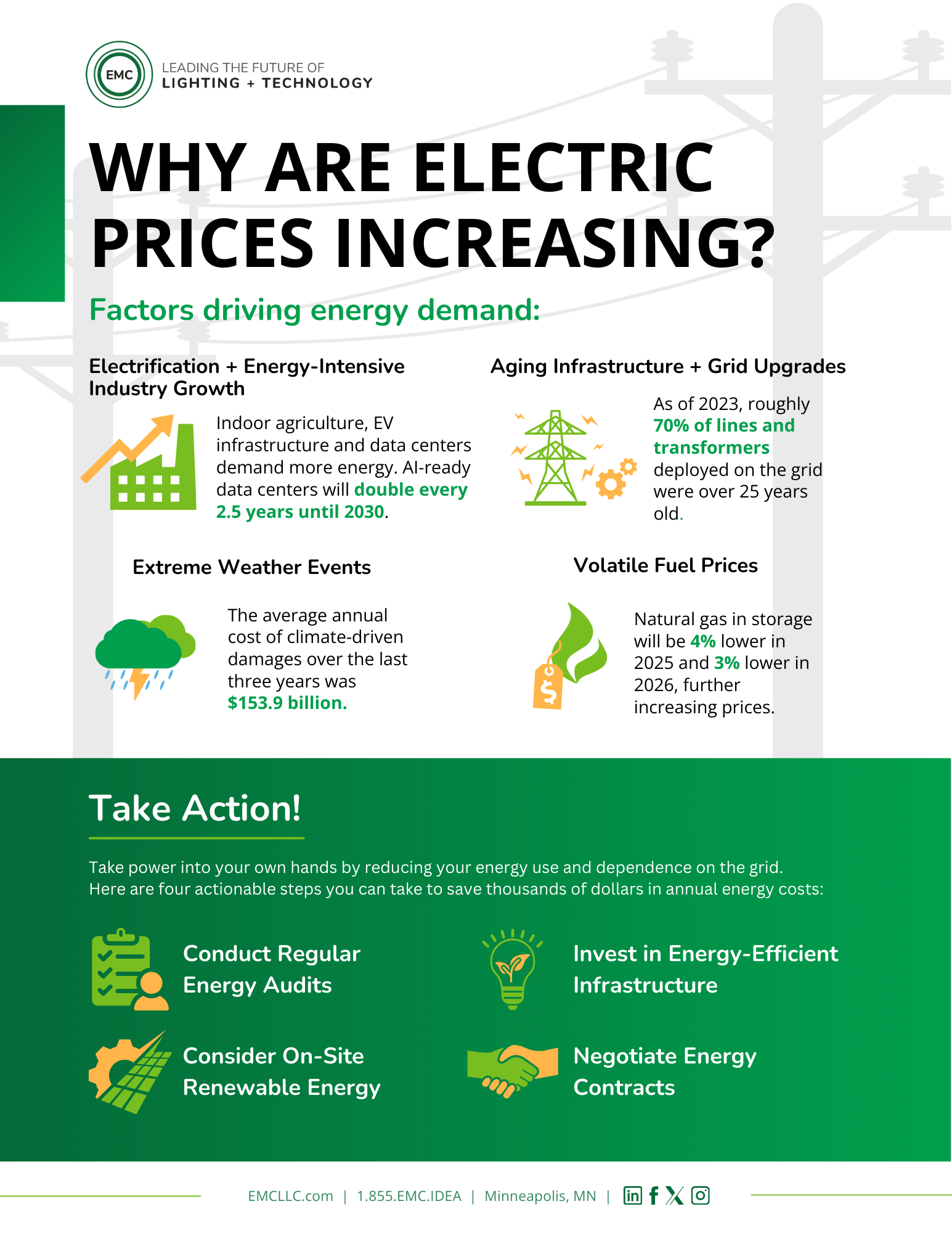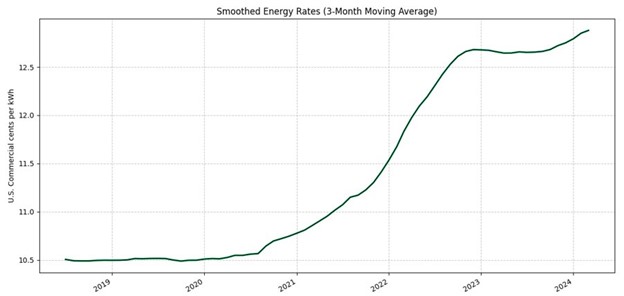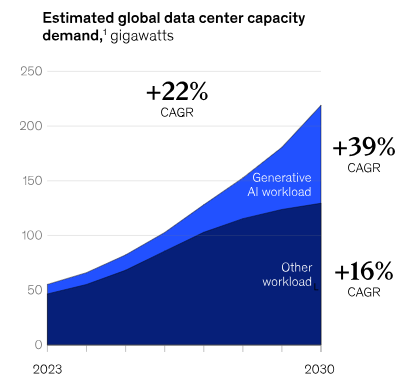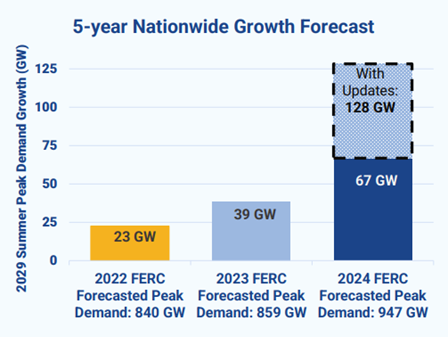Combatting Rising Electricity Rates: A Guide for Enterprise-Level Businesses

Keeping operating costs low while energy prices soar is no easy task. Electricity rates are rising faster than ever and show no signs of slowing, amounting to hundreds of thousands of dollars in annual energy costs for enterprise-level businesses.

Image Source: eia.gov
Add shifting mandates and market volatility to the mix, and you may be asking if there’s any way to manage your energy spend effectively.
There’s absolutely a way to hedge the negative impact of skyrocketing energy prices on your business. Understanding the forces behind today's electricity trends can help you prepare, use energy more efficiently, and handle whatever challenges the grid might bring. Read on for four proven steps you can use to save thousands in annual energy costs.
Why Are Electricity Rates Increasing?
Before we get ahead of ourselves, let’s explore some of the factors driving energy demand. Grid Strategies, a power sector consulting firm, projects that demand will increase by a factor of five from 2.8% to 15.8% by 2029. This growth is equivalent to adding the electricity consumption of four additional United States to the current demand.
Image Source: Grid Strategies
The demand for electricity is influenced by several main drivers:
Energy-Intensive Industry Growth
Rising energy demand from semiconductor chip manufacturing and artificial intelligence require vast data centers powered by enormous amounts of energy, adding pressure to electricity grids that we have never seen before. This unprecedented load ultimately increases energy costs, particularly during peak usage periods.
McKinsey estimates that in a midrange, conservative scenario, AI-ready data center demand will rise at an average rate of 33% each year until 2030; this growth rate is similar to doubling in size every 2.5 years. If data center demand were a city's population, it would grow from a modest town of 100,000 people in 2023 to a bustling metropolis of over 750,000 by 2030. This is equivalent to a city like Denver expanding to the size of San Francisco in just seven years.

Image Source: McKinsey & Company
Aging Infrastructure and Grid Upgrades
Utility providers face resiliency issues with the grid due to its age. Most of America’s grid was built in the 60s and 70s and has been degrading notably over the past decade. As of 2023, roughly 70% of lines and transformers deployed on the grid were over 25 years old. To put this in context, imagine that 70% of all cars on the road today were manufactured before 1998.
Upgrading America’s aging electrical grid is expensive, as utilities invest heavily in modernizing systems to maintain reliability. Investments in renewable energy sources and the upgrades to the electrical grid needed to accommodate these sources also contribute to higher electricity prices in the short term.
Extreme Weather Events
The average annual cost of climate-driven extreme weather events over the last three years has been $153.9 billion. With this money, you could theoretically buy 23 NFL teams at their average valuation.
Premature failures in power grid infrastructure, broken power lines, damaged transformers, and strained generators are all consequences of recent weather trends. Droughts and heat waves lead to spikes in electricity use and further operational challenges for utilities, further increasing the cost of energy.
Volatile Fuel Prices
Many power plants rely on natural gas, coal, and oil to generate electricity. Fuel price volatility, particularly for natural gas, significantly impacts electricity rates because natural gas is a primary fuel source for electricity generation. When natural gas prices rise, it becomes more expensive to generate electricity, and utilities pass these increased costs on to consumers in the form of higher electricity rates.
The U.S. Energy Information Administration (EIA) projects that the electric power sector will use more than 36 billion cubic feet per day of natural gas in 2025 and 2026. Natural gas in storage is also projected to be 4% lower in 2025 and 3% lower in 2026 respectively. The combination of more natural gas consumption and less gas reserves means more demand and higher electricity prices.
Don’t be reactive. Act Instead with These Four Steps.
With energy rates continuing to skyrocket, you cannot afford an ad-hoc, band-aid approach to energy management. What you can do is take the power into your own hands by reducing your energy use and dependence on the grid.
Here are four actionable steps you can take to save thousands of dollars in annual energy costs:
- Conduct Regular Energy Audits
Identify inefficiencies in lighting, HVAC, machinery, or other equipment, and address them with upgrades or process changes. Ask yourself when the last time you performed a thorough analysis and inspection of your energy infrastructure. Your LED lights? At five years post install, your occupants may start noticing lumen depreciation and your utility bills may be higher than they should be. Your HVAC systems? Reduced airflow and inefficient heat transfer mean that your HVAC system must run longer and harder to maintain desired indoor conditions, driving up energy costs by as much as 15%.
An expert energy auditor will uncover inefficiencies that, if resolved, can save you money and offer benefits that compound long term as you maintain the health of your investment. If the energy auditor can also install and service your infrastructure, that’s even better.
- Invest in Energy-Efficient Infrastructure
Replace outdated lighting with energy-efficient LEDs. If you’re currently using fluorescent lighting, transitioning to LED can provide up to 75% energy savings. If you are upgrading from legacy LED to newer LEDs (reLED), you can capture up to 50% energy savings.
Smart building controls enable you to track usage, shift consumption to off peak hours, and manage energy at all your locations within a single pane of glass. Our customers have captured up to 30% energy savings by integrating smart control systems.
UV-C light installed in your HVAC systems continuously disinfects and destroys biofilm that makes your units work harder for less output. With a simple install, you’ll reduce your HVAC energy consumption by up to 15%.
- Consider On-Site Renewable Energy
Installing solar panels, battery storage, and wind turbines on-site can offset grid energy usage and shield you against market fluctuations. Becoming more energy independent is a smart strategy that can slash electricity bills, providing immediate and long-term financial relief.
Imagine running your business without the lingering worry of power outages disrupting your operations. In the event of an outage, the energy you captured from solar panels or wind turbines can be channeled from battery storage, ensuring business continuity no matter what happens. While renewable energy requires some up-front investment, the long-term savings and business continuity make the investment worthwhile.
- Negotiate Energy Contracts
Many don’t realize that electricity rate plans can be negotiated and, whether consciously or not, choose to maintain the status quo. It’s human nature to set things and forget them.
Take, for example, your home phone and internet plans. There’s probably a more affordable plan out there that even bundles with your Netflix subscription. Have you checked in the last year if you could find a better plan or asked for discounts? Maybe you haven’t. All it might take is a conversation with your energy contract supplier to secure a better rate.
The key to approaching any energy contract negotiation starts with understanding your business and how you’re currently buying energy. Do you have sustainability goals that align with future energy-saving investments? What are your energy consumption patterns?
Consider whether a fixed-rate or variable-rate contract is better for you. Fixed-rate contracts offer price stability and are ideal for expense planning but may have you spending more if market rates fall. Flexible contracts, however, align with market fluctuations, offering potential savings when prices drop but carry the risk of higher costs when demand surges.
Ensure you aren’t on a deemed contract. If you haven’t secured a new contract or have moved to a new premises, you might have been placed on a rolling contract, usually among the highest charged rates on the market. Other plans worth looking into include Time-of-Use plans which alter rates based on time of day to incentivize energy use at off-peak hours and green energy plans which tie rates to energy sourced from your on-site renewables.
You Are Not Powerless
Energy rates will continue to rise, yes. But that doesn’t mean you’re powerless and at the mercy of forces outside your control. Audit your energy infrastructure, invest in energy-efficient technologies, adopt renewable energy sources and negotiate your energy rate plans. You’ll be surprised at how much energy you can save and the impact it will have on your bottom line.
If you don’t know where to start, we can help. With expertise spanning 20+ years, our turnkey approach to energy management has helped our clients avoid nearly 25 billion kWh worth of energy costs. Contact us today to minimize the impact of rising energy rates on your business.



